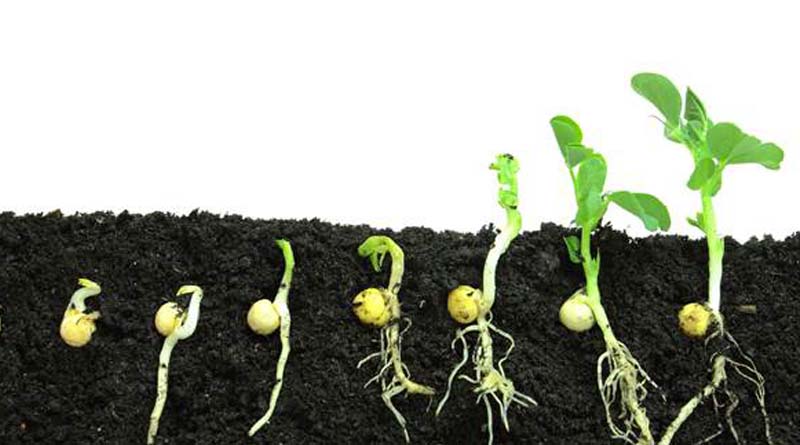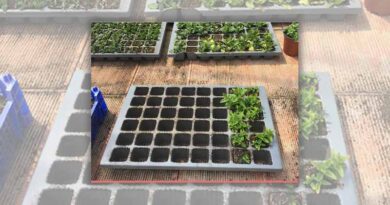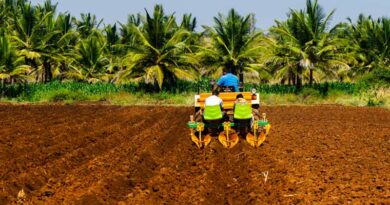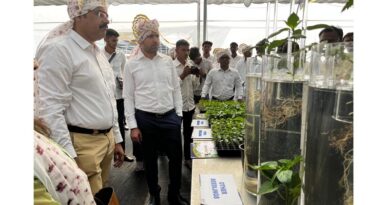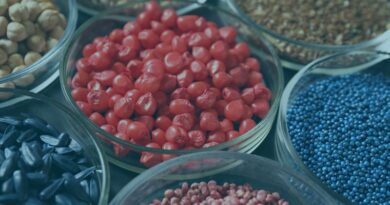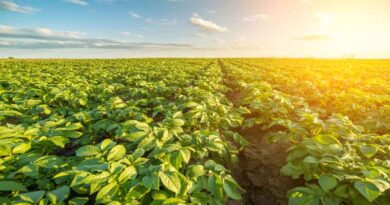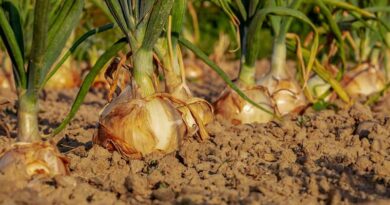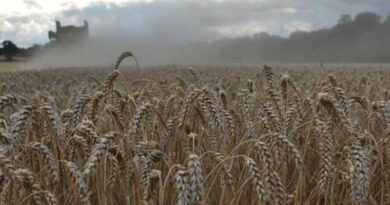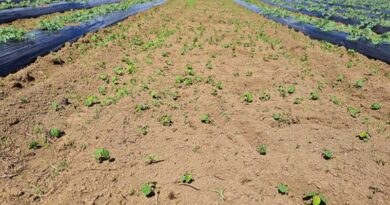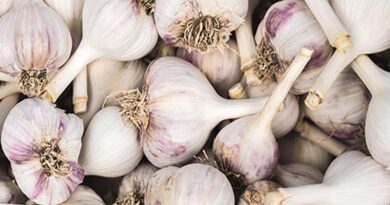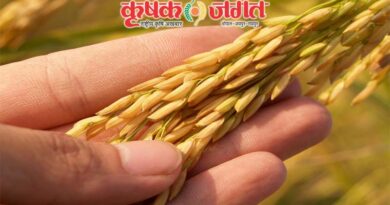Seedling Planters Bring Efficiency and Precision to Planting Process
06 May 2024, New Delhi: In the realm of agriculture, where precision and efficiency are paramount for sustainable growth, technological innovations continually play a vital role. Among these innovations, seedling planters have emerged as a game-changer, transforming the planting process with unprecedented accuracy and speed. This article delves into the significance of seedling planters, exploring how they revolutionize agricultural practices and contribute to enhanced productivity and sustainability.
Seedling planters, also known as transplanters, are agricultural machines designed to automate the process of planting seedlings into the soil. Unlike traditional manual methods that require labor-intensive tasks, seedling planters mechanize this process, offering precise placement of seedlings at optimized intervals. These machines come in various types, ranging from handheld devices for small-scale farming to large-scale, tractor-mounted systems suitable for extensive agricultural operations.
The seedling planters market is gaining traction as demand for gardening, agriculture, and sustainable food production continues to grow globally. Seedling planters are used for starting seeds or young plants before transplanting them into a larger area or a garden bed. These tools and systems play a crucial role in ensuring the healthy growth of seedlings, facilitating efficient transplantation, and optimizing space utilization in gardens, greenhouses, and farms. According to Persistence Market Research’s projections, the global seedling planters market is expected to grow at a CAGR of 5.5%, with a market value of $3.2 billion in 2024, projected to reach $4.6 billion by 2031. This growth is driven by increased interest in home gardening, rising food security concerns, and sustainable agricultural practices.
The Mechanism Behind Seedling Planters:
Seedling planters operate through sophisticated mechanisms engineered to streamline the planting process. Typically, these machines consist of a planting mechanism, a seedling tray holder, and sometimes a conveyer belt system for continuous operation. The planting mechanism varies based on the type of planter, but the fundamental principle involves picking up seedlings from trays and transplanting them into the soil at predetermined intervals.
Key Features and Advantages:
Precision Planting: Seedling planters ensure precise placement of seedlings, maintaining optimal spacing between plants to maximize growth potential and yield.
Time Efficiency: By automating the planting process, seedling planters significantly reduce the time and labor required compared to manual methods. This efficiency allows farmers to cover larger areas in shorter timeframes, leading to increased productivity.
Reduced Labor Costs: With the automation provided by seedling planters, farmers can minimize labor costs associated with manual planting, reallocating resources to other critical aspects of farming operations.
Improved Crop Uniformity: Consistent plant spacing facilitated by seedling planters promotes uniform growth across the field, minimizing competition for resources such as sunlight, water, and nutrients.
Enhanced Yield Potential: The precision and efficiency offered by seedling planters contribute to optimized plant growth conditions, ultimately translating into higher crop yields.
Versatility: Seedling planters come in various configurations to accommodate different crop types, soil conditions, and farming practices, making them adaptable to diverse agricultural environments.
Applications Across Agricultural Sectors:
Seedling planters find applications across a wide range of agricultural sectors, including:
Horticulture: In horticultural operations such as nurseries and greenhouse cultivation, seedling planters streamline the transplanting of young seedlings into pots or beds, enhancing efficiency and reducing manual labor.
Field Crops: For large-scale field crop cultivation, such as rice, maize, and vegetables, tractor-mounted seedling planters offer a practical solution to accelerate the planting process and optimize plant spacing.
Forestry: In reforestation and afforestation projects, seedling planters play a crucial role in planting tree seedlings efficiently, facilitating forest restoration efforts and sustainable forestry practices.
Specialty Crops: Specialty crop growers, including those cultivating fruits, herbs, and flowers, benefit from the precision planting capabilities of seedling planters, ensuring optimal plant spacing and maximizing crop quality.
Challenges and Considerations:
While seedling planters offer numerous advantages, their adoption may present challenges and considerations for farmers:
- Initial Investment: The cost of acquiring seedling planters can be significant, particularly for small-scale farmers or those operating in resource-constrained environments. However, the long-term benefits in terms of efficiency and productivity often justify the investment.
- Maintenance Requirements: Like any agricultural machinery, seedling planters require regular maintenance to ensure optimal performance. Farmers must factor in maintenance costs and procedures when integrating these machines into their operations.
- Technical Expertise: Operating seedling planters effectively requires a certain level of technical expertise. Proper training and familiarization with the equipment are essential to maximize its efficiency and minimize the risk of errors.
- Adaptation to Soil Conditions: Seedling planters may encounter challenges when operating in varying soil conditions, such as rocky terrain or excessively wet or dry soil. Farmers may need to adjust planting parameters or implement soil preparation techniques to optimize performance.
Future Trends and Innovations:
As agricultural technology continues to advance, the future of seedling planters holds promising developments aimed at further enhancing efficiency, sustainability, and user-friendliness. Some key trends and innovations include:
- Integration of Precision Agriculture Technologies: Seedling planters equipped with GPS guidance systems, sensors, and automation technologies enable precise planting and real-time data collection for improved decision-making.
- Sustainable Practices: Manufacturers are increasingly focusing on developing eco-friendly seedling planters that minimize environmental impact through reduced fuel consumption, emissions, and soil disturbance.
- Modular Design: Modular seedling planters with interchangeable components allow farmers to customize the equipment according to their specific needs, enhancing versatility and operational flexibility.
- Artificial Intelligence and Machine Learning: Advancements in AI and machine learning algorithms empower seedling planters to adaptively optimize planting parameters based on environmental conditions, crop requirements, and historical data.
Seedling planters represent a significant advancement in agricultural technology, offering farmers a reliable solution to enhance planting efficiency, precision, and productivity. By automating the planting process and ensuring optimal plant spacing, these machines contribute to sustainable farming practices and improved crop yields. While challenges such as initial investment and technical expertise may exist, the long-term benefits justify the adoption of seedling planters as indispensable tools in modern agriculture. Looking ahead, continued innovation and integration of advanced technologies hold the promise of further optimizing seedling planting processes and shaping the future of sustainable food production.
The above abstract is part of a report by Persistence Market Research.
Also Read: PAU Registers First Biocontrol Agent for Foot Rot Disease Management in Basmati Paddy
(For Latest Agriculture News & Updates, follow Krishak Jagat on Google News)

